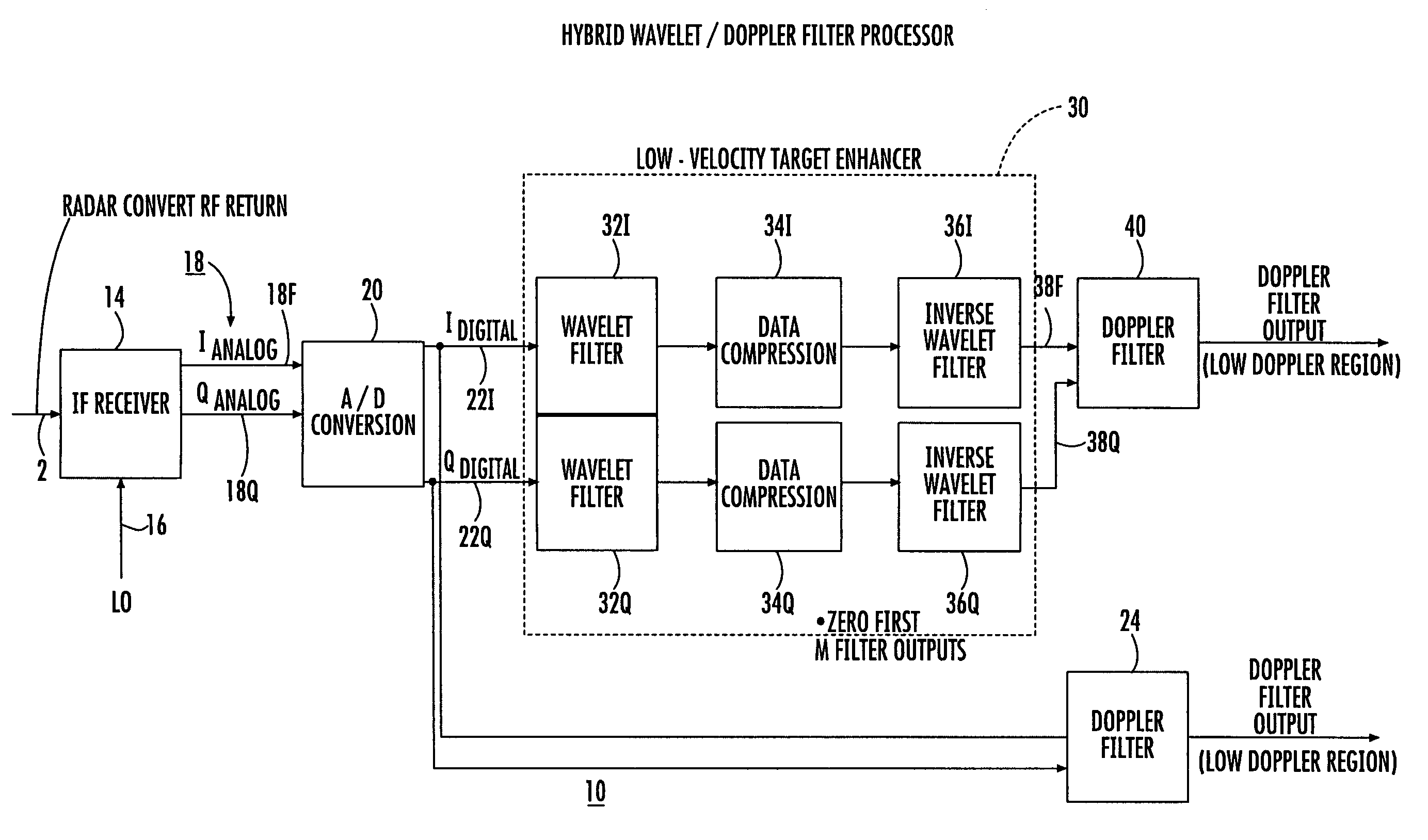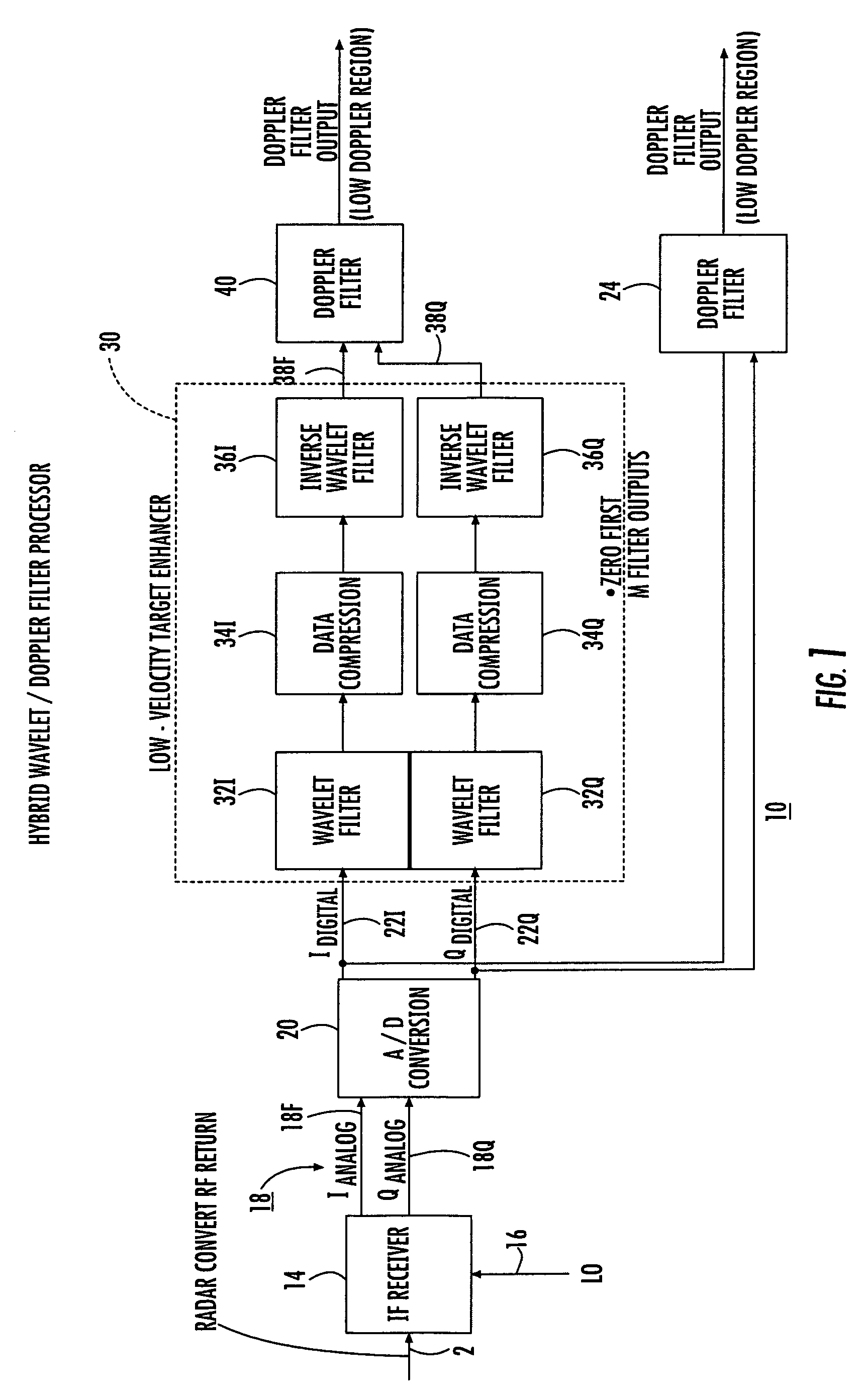Sensor doppler/wavelet processing
a technology of doppler and wavelet, applied in the field of sensors, can solve the problems of clutter in most radar systems, large target returns of clutter, and the effect of clutter
- Summary
- Abstract
- Description
- Claims
- Application Information
AI Technical Summary
Benefits of technology
Problems solved by technology
Method used
Image
Examples
Embodiment Construction
[0010]FIG. 1 is a simplified block diagram of a portion of a radar receiver according to an aspect of the invention. In FIG. 1, radar return signals resulting from target reflections due to coherent transmitted pulses appear on an input signals path 12, and are applied to an intermediate-frequency (IF) receiver 14. Receiver 14 also receives local oscillator signals by way of a path 16, and produces analog inphase (I) and quadrature (Q) baseband signals, which are applied by way of individual path portions 18I and 18Q of a path 18 to an analog-to-digital converter (ADC) 20. ADC 20 converts the analog I and Q signals to digital form, and the resulting digital I and Q signals appear on paths 22I and 22Q, respectively.
[0011]The digital I and Q signals are applied to a first Doppler filter bank 24, which is a conventional Doppler filter bank for filtering the return signals into various frequency bins. It should be noted that the term “Doppler filter bank” is meant to include all manifes...
PUM
 Login to View More
Login to View More Abstract
Description
Claims
Application Information
 Login to View More
Login to View More - R&D
- Intellectual Property
- Life Sciences
- Materials
- Tech Scout
- Unparalleled Data Quality
- Higher Quality Content
- 60% Fewer Hallucinations
Browse by: Latest US Patents, China's latest patents, Technical Efficacy Thesaurus, Application Domain, Technology Topic, Popular Technical Reports.
© 2025 PatSnap. All rights reserved.Legal|Privacy policy|Modern Slavery Act Transparency Statement|Sitemap|About US| Contact US: help@patsnap.com


